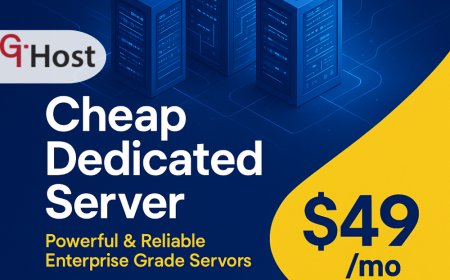What Is a Contact Center as a Service (CCaaS) and How Does It Work?
Discover what Contact Center as a Service (CCaaS) is and how it revolutionizes customer support. Learn about its features and benefits for your business.

In todays digital-first world, businesses must evolve their customer engagement strategies to stay competitive. Traditional call centers with on-premises infrastructure are quickly becoming outdated, giving way to more scalable, flexible, and intelligent solutions like Contact Center as a Service (CCaaS).
But what exactly is CCaaS, how does it work, and why are enterprises making the switch? In this article, well explore the fundamentals of Contact Center Services, the growing demand for video calls for Cisco Contact Center, and how your business can benefit from a modern, cloud-based approach to customer interaction.
What Is Contact Center as a Service (CCaaS)?
Contact Center as a Service (CCaaS) is a cloud-based customer experience solution that allows businesses to deploy and manage contact center operations without owning or maintaining any on-premise hardware or software. Its a subscription-based model that delivers all the tools needed to manage customer communication across various channels, including voice, email, chat, and video through a centralized platform.
Unlike traditional setups, CCaaS enables companies to scale quickly, integrate cutting-edge technologies like AI, and provide Contact Center Services with higher agility, reliability, and cost-efficiency.
How Does CCaaS Work?
CCaaS solutions are hosted in the cloud and accessed through the internet. Here's a breakdown of how it typically functions:
-
Omnichannel Communication: Customers can reach out through voice calls, SMS, chat, social media, and even video calls for Cisco Contact Center. The platform routes interactions to the right agents based on skills, availability, or AI-driven suggestions.
-
AI and Automation: Modern CCaaS platforms integrate AI features like chatbots, virtual agents, and sentiment analysis to enhance productivity and personalize customer experiences.
-
Real-time Analytics: Supervisors and managers can monitor agent performance, customer satisfaction scores, call volumes, and service levels in real-time through intuitive dashboards.
-
CRM Integration: CCaaS systems often integrate with CRM platforms like Salesforce, HubSpot, or Microsoft Dynamics to ensure customer context is always available for agents.
-
Workforce Management: Scheduling, forecasting, and performance tracking features ensure teams are staffed and optimized for efficiency.
The result? A seamless, intelligent, and customer-centric support experience that meets the needs of both businesses and their customers.
Benefits of Adopting CCaaS for Enterprises
1. Scalability and Flexibility
CCaaS lets businesses scale up or down based on seasonal demand, geographic expansion, or business growth. Whether you're adding 10 or 1,000 agents, the platform adjusts without the need for additional infrastructure.
2. Reduced Operational Costs
Since there's no need for expensive on-premise equipment or IT maintenance, operational costs drop significantly. Enterprises pay only for what they use, making Contact Center Services more cost-effective.
3. Improved Customer Experience
Omnichannel capabilities ensure customers get help through their preferred communication channels. Plus, intelligent routing and AI assistance mean faster resolutions and more satisfying interactions.
4. Rapid Deployment and Updates
CCaaS platforms are deployed quickly and updated automatically. New features, integrations, and security patches are rolled out regularly, helping your business stay ahead of the curve.
5. Enhanced Security and Compliance
Top CCaaS providers offer enterprise-grade security, including data encryption, access controls, and compliance with regulations like GDPR, HIPAA, and PCI-DSS.
Key Features to Look for in a CCaaS Platform
When evaluating a Contact Center Services provider, enterprises should look for the following capabilities:
-
Omnichannel Support: Voice, chat, email, social media, and video call for Cisco Contact Center.
-
AI-Powered Assistance: Chatbots, conversational IVR, and real-time language translation.
-
Advanced Routing: Skills-based, AI-driven, or priority-based routing to optimize call handling.
-
Integrations: Seamless connectivity with leading CRMs and business tools.
-
Real-Time Reporting: Dashboards and KPIs to monitor service levels and agent performance.
-
Remote Agent Support: Cloud-based systems empower hybrid and remote teams.
-
Self-Service Options: IVR, knowledge bases, and virtual assistants to deflect routine inquiries.
The Role of Cisco in the Future of CCaaS
When it comes to enterprise-grade solutions, Cisco has long been a trusted name in communication technology. The Cisco Contact Center suite is now available as a cloud-native CCaaS offering, enabling organizations to combine the reliability of Cisco with the agility of the cloud.
A growing trend in enterprise support is the integration of video call for Cisco Contact Center capabilities. This feature is particularly valuable for industries like healthcare, finance, and tech support, where face-to-face interaction can enhance trust and problem resolution.
Imagine a customer having an issue with a complex product. Rather than a long phone call, a video call for Cisco Contact Center allows the support agent to visually inspect the problem, offer real-time assistance, and resolve the issue faster. This type of engagement creates a richer customer experience and increases satisfaction rates.
Why Enterprises Are Embracing Contact Center Services in the Cloud
As customer expectations evolve, businesses must move away from reactive support and toward proactive, personalized engagement. CCaaS empowers enterprises to do just that by providing modern Contact Center Services that are intelligent, scalable, and customer-centric.
Here are some key reasons enterprises are making the switch:
-
Customer-Centricity: Delivering personalized service at every touchpoint.
-
Agility: Responding quickly to market demands and customer needs.
-
Global Reach: Serving customers worldwide with local language and time-zone support.
-
Innovation: Leveraging AI, automation, and video calls for Cisco Contact Center to enhance service delivery.
Making the Transition to CCaaS: What Enterprises Should Know
Transitioning to CCaaS is a strategic move, and heres how enterprises can ensure a smooth migration:
-
Assess Business Needs: Understand current pain points and future goals.
-
Choose the Right Partner: Opt for a provider with a proven track record in enterprise-grade Contact Center Services.
-
Plan for Integration: Ensure compatibility with your existing CRM, ERP, and communication tools.
-
Train Your Teams: Empower agents and supervisors to leverage the new system fully.
-
Focus on Customer Experience: Use features like video call for Cisco Contact Center and AI assistants to create wow moments.
Final Thoughts
The future of customer engagement is cloud-based, intelligent, and experience-driven. Contact Center as a Service (CCaaS) is more than just a technology shift; its a transformational approach to delivering meaningful customer experiences at scale.
With robust Contact Center Services, real-time insights, and the power of video calls for Cisco Contact Center, enterprises are well-equipped to meet the demands of modern consumers while driving loyalty, satisfaction, and growth.
If you're ready to evolve your customer service strategy, now is the time to explore CCaaS. The cloud is calling, and it's answering with intelligence, agility, and innovation.





































